Parallel EVM Holy Grail Battle: Monad, MegaETH and Pharos

Reprinted from panewslab
03/31/2025·1MPreface
Recently, the three Heavenly King-level parallel EVM projects have launched test networks one after another, namely Monad’s test network on February 19, MegaETH’s test network on March 21, and Pharos’s test network on March 24. The main narrative of Web3 technology seems to have returned to parallel EVM after AI Agent - the hottest narrative in early 2024.

EVM (Ethereum Virtual Machine) is the core of Ethereum, responsible for running smart contracts and processing transactions. EVM is a computing engine that provides abstractions of computing and storage, but EVM does not have scheduling functions. Ethereum's execution module takes out transactions from the block, and EVM is responsible for executing them in turn. While sequential execution ensures that transactions and smart contracts can be executed in a deterministic order and ensures security, it can lead to network congestion and delays in the face of high loads.
Parallel EVM greatly improves the network throughput by allowing multiple operations to be performed simultaneously, thereby enhancing the performance and scalability of the entire blockchain. In fact, the parallel EVM we refer to actually refers to high-performance EVM compatible blockchains. It not only introduces parallel execution, but also accelerates the comprehensive upgrade from consensus, transactions, pipelines, storage to hardware. The purpose is to enable the blockchain network to process more transactions in a shorter time, effectively solving the network congestion and delay problems of traditional blockchains.
This article will explore in-depth the context and architecture of the three projects, Monad, MegaETH, and Pharos, as well as the trade-offs of developers' choices.
Monad
Monad is a high-performance EVM compatible Layer1 blockchain developed by Monad Labs. Monad maintains decentralization while improving system scalability and solves the low throughput problem of existing EVM-compatible blockchains.
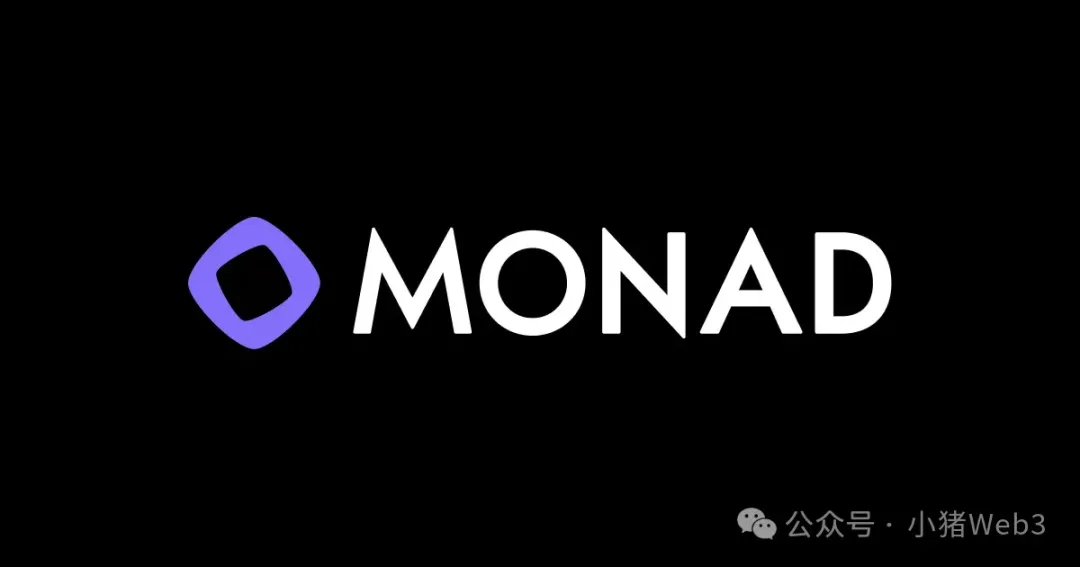
Monad Labs was co-founded in 2022 by Keone Hon, James Hunsaker and Eunice Giarta, where Keone and James are former employees of market maker Jump Trading, and Eunice comes from a non-Crypto background.
In February 2023, Monad Labs completed a seed round of $19 million financing, led by Dragonfly; in April 2024, Monad Labs completed a new round of $225 million financing, led by Paradigm. Monad is currently valued at $3 billion.
The key advantage of Monad is that it can handle up to 10,000 transactions per second and has a block time of 1 second. This is mainly due to the optimization in the following four aspects:
- MonadBFT: A high-performance consensus mechanism based on an improved version of HotStuff. Used to achieve consistency in transaction sorting under partial synchronization conditions in the presence of Byzantine actors. First, MonadBFT adopts a two-stage BFT algorithm, which is optimistic and responsive, and has linear communication overhead in common cases and secondary communication overhead in timeout cases. Second, MonadBFT adopts a hybrid signature scheme, and the integrity and authenticity of messages are provided by ECDSA signatures, and the aggregated message types (voting and timeout) are provided by BLS signatures, solving the scalability problem. Moreover, in Monad, nodes do not maintain a global transaction pool, but a local transaction pool, and transactions are forwarded by RPC nodes to several subsequent leader nodes, effectively reducing bandwidth usage and transaction delays. Finally, MonadBFT's message propagation also uses the RaptorCast protocol, which not only converts block proposals into erasure code blocks, but also sends each block to all validators through a two-level broadcast tree. RaptorCast The entire upload bandwidth of the entire network is used to propagate block proposals to all validators while preserving Byzantine fault tolerance. Due to these characteristics, MonadBFT can achieve efficient and robust blockchain consensus;
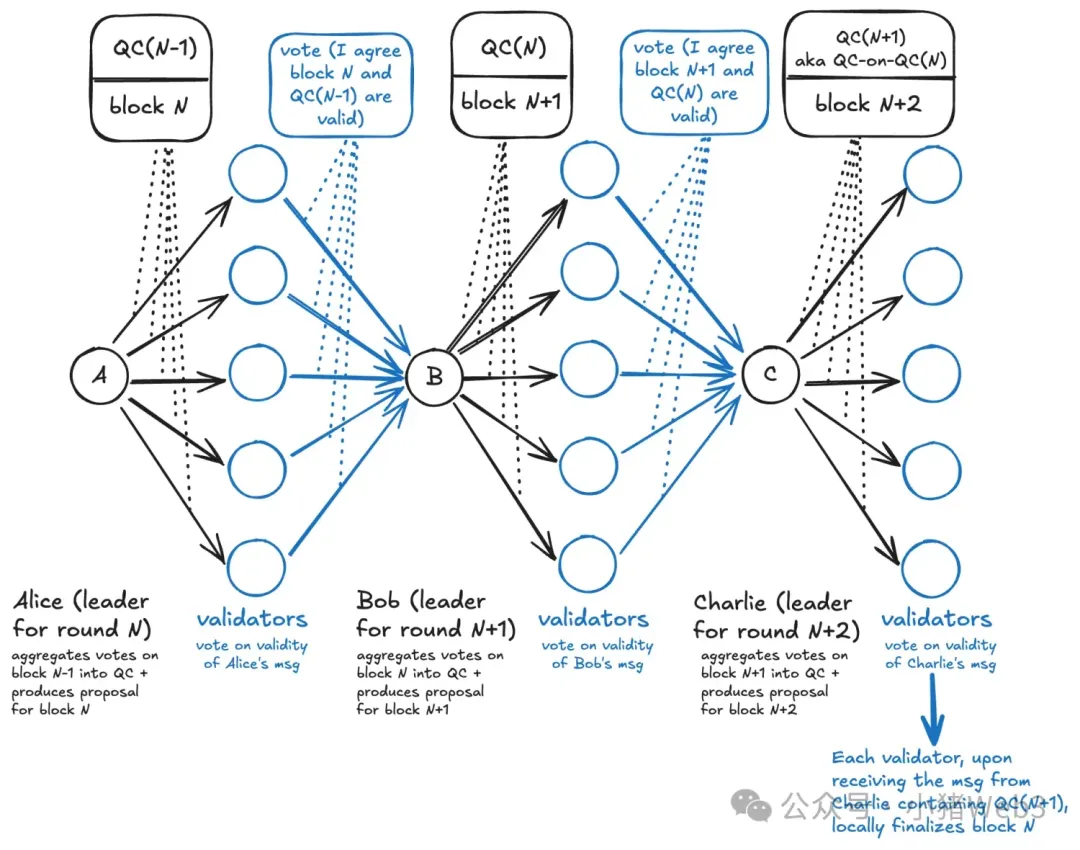
-
Asynchronous execution: Asynchronous execution allows Monad to significantly improve execution throughput by separating consensus from execution. Separating consensus from execution allows Monad to significantly increase the execution budget, because execution goes from occupying a small portion of block time to occupying the entire block time. First, the Monad block proposal does not include the state root. In order to prevent node forking, the block proposal also includes the state root from the previous 3 blocks, allowing the node to detect whether they forked; second, the leader node builds the block from a delayed state perspective. In order to defend against DDoS attacks, the Monad node will verify whether the balance of the account is sufficient to meet the highest debit in the user account related to the ongoing transactions; finally, after the node receives the proposed block, although the block has not been finalized at this time, during which time the node can still execute the proposed block locally, but there is no guarantee that it will be voted or finalized. Due to these features, Monad allows significant speed improvements, allowing single-segment blockchains to scale to millions of users;
-
Parallel execution: Monad uses an optimistic execution method, that is, the subsequent transactions are executed before the earlier transactions in the block are completed, and the update status of each transaction is merged in order. This sometimes causes incorrect execution results, and to solve this problem, Monad by tracking the inputs used during the execution of the transaction and comparing them to the output of the previous transaction. If there is a difference, it means that the transaction needs to be re-executeed with the correct data. In addition, Monad uses a static code analyzer when executing transactions to predict dependencies between transactions to avoid invalid parallel execution. In the best case, Monad can predict many dependencies in advance; in the worst case, it falls back to a simple execution mode. Monad's parallel execution technology not only improves network efficiency and throughput, but also reduces transaction failures caused by parallel execution by optimizing execution strategies;
-
MonadDB: MonadDB is a key component in Monad to maintain full compatibility with Ethereum while providing high performance. MonadDB is a custom KV database designed to store proven blockchain data. First, MonadDB natively implements the Merkle Patricia Trie data structure in disk and memory, and implements its own indexing system, eliminating file system dependencies, so it can efficiently store Merkle Patricia Trie nodes on disk; secondly, MonadDB adopts asynchronous I/O, making full use of the latest kernel's support for asynchronous I/O, avoiding the generation of a large number of kernel threads to process pending I/O requests to try to execute asynchronously; finally, MonadDB also uses concurrent control, sequential writing, data compression and other technologies to further optimize the performance of MonadDB. Due to these characteristics, MonadDB reduces data access time and improves transaction processing speed, thereby improving the performance of the entire blockchain network.
MegaETH
MegaETH is the fastest Layer2 blockchain currently developed by MegaLabs. MegaETH is unique in its focus on real-time blockchain performance, providing ultra-low latency and scalability for applications that require instant response.
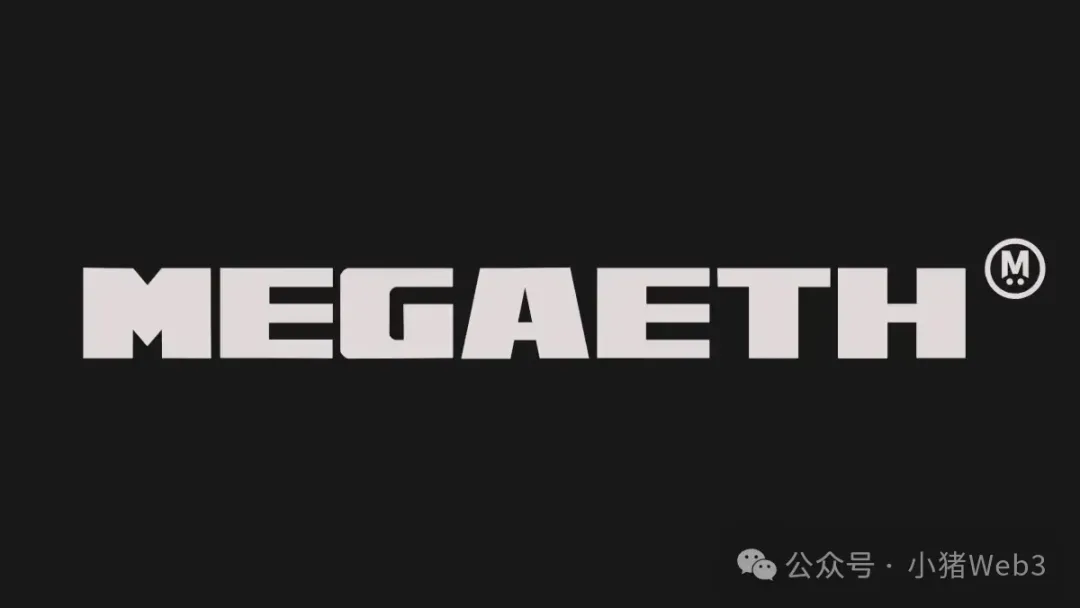
Founded in early 2023, CEO Li Yilong holds a PhD in computer science from Stanford University and has worked for the software company Runtime Verification Inc.; CTO Yang Lei is a PhD at MIT; CBO Kong Shuyao is a former global business development director at Consensys; and growth director Namik Muduroglu has worked at Consensys and Hypersphere.
In June 2024, MegaLabs completed a $20 million financing round in the seed round, led by Dragonfly; in December 2024, MegaLabs conducted a community round of financing on the Echo platform, completing its $10 million financing target within 3 minutes. MegaETH is currently valued at over $200 million.
MegaETH has a TPS of 100k and a block time of about 10ms, enabling millisecond response time even under high loads. It is mainly due to the following technical features:
- Node specialization: MegaETH nodes with different roles assume different functions and require different hardware configurations. There are three roles in MegaETH: the Sequencer is responsible for transaction sorting and execution, and there is only one centralized node, which saves the overhead of consensus. The Sequencer publishes the generated blocks, witness data and state differences to EigenDA (data availability layer) to ensure that these data are available in the network; the Provers obtains blocks and witness data from the sorter and performs stateless verification through dedicated hardware, that is, the blocks can be verified asynchronously without storing the entire blockchain state; the entire node receives state differences from the sorter and updates the local state, and at the same time, it can verify the effectiveness of the blocks by proving the network to ensure the consistency and security of the blockchain;
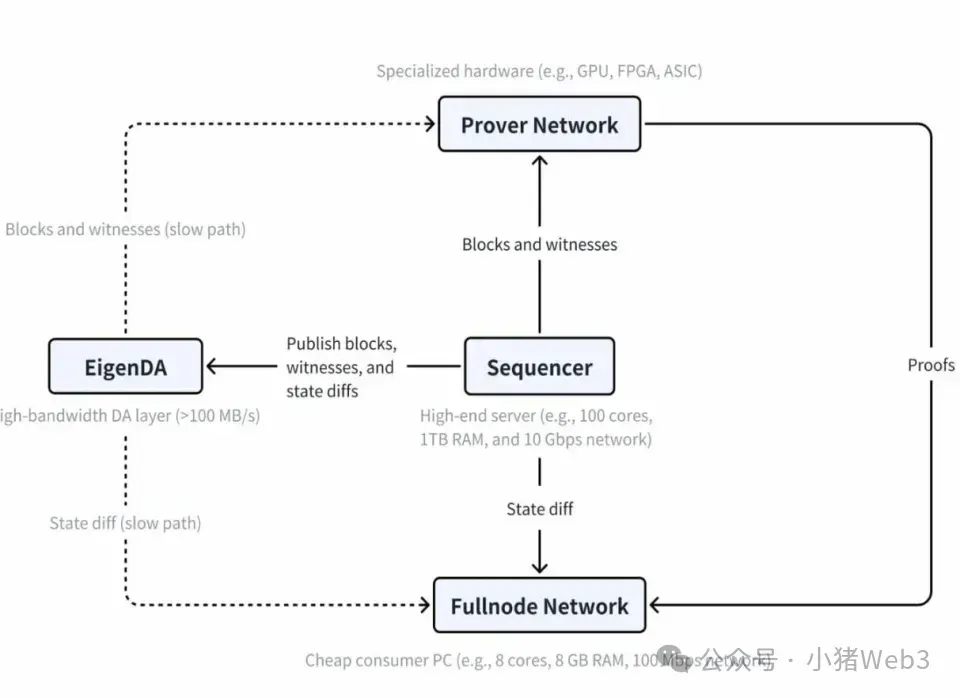
-
Targeted optimization: MegaETH "prescribes the right medicine" to various problems faced by traditional EVM blockchains. In response to the problem of high memory and I/O acquisition latency, MegaETH designed a new state Trie with extremely high memory and I/O efficiency, which can be successfully expanded to TB of state data without incurring additional I/O costs; in response to the problem of serial execution, MegaETH's sorter can adopt any parallel execution strategy; in response to the problem of low interpreter efficiency, MegaETH uses a JIT compiler to eliminate interpretation overhead, bringing performance close to bare metal execution to the computing-intensive Dapp; in response to the problem of excessive state synchronization bandwidth, MegaETH designed an efficient state difference encoding and transmission method, which can synchronize a large number of state updates under limited bandwidth, and at the same time, MegaETH can synchronize state updates of complex transactions within bandwidth limitations through advanced compression technology;
-
Mini Blocks: MegaETH is pre-confirmed every 10 milliseconds, called Mini Blocks. The block headers of standard EVM Blocks take up a considerable amount of space (500+ bytes), and the calculation of the three Merkle Roots is also time-consuming, so using standard EVM Blocks will put a huge burden on light clients. MegaETH's Mini Blocks are generated in parallel with EVM Blocks and provide the same inclusion guarantee, but greatly shortens the intervals that propagate to the rest of the network. Light clients use the MegaETH-specific Realtime API to get transactions that are already in Mini Blocks but not in EVM Blocks.
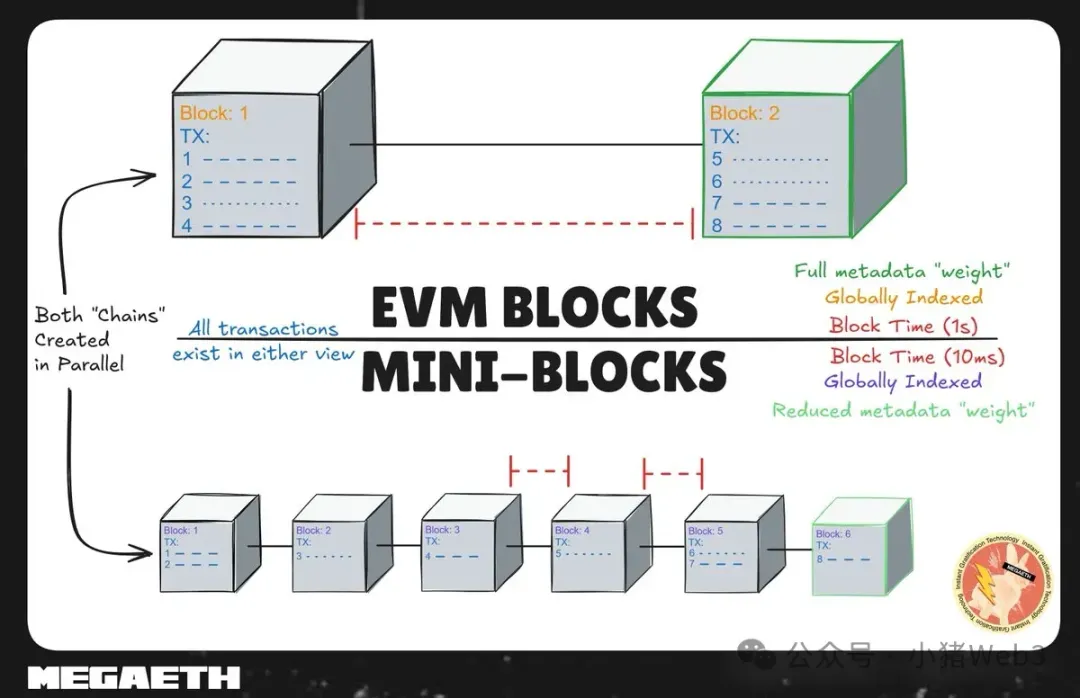
Pharos
Pharos is positioned as a high-performance EVM compatible with Layer1 blockchain, committed to building the best RWA and Payment ecosystem. Pharos has super high performance that processes 50,000 transactions per second and consumes 2 billion units of gas (2 gigagas) per second.

Pharos was founded in 2024. CEO Alex Zhang served as CTO of Ant Chain and later as CEO of Ant Chain Web3 brand ZAN; CTO Wishlonger was formerly CSO of Ant Chain; CMO Laura was responsible for marketing at Solana Labs and successfully sold out the first generation of Solana mobile Saga; COO Sally worked at OKX; CCO Matthew led ecosystem construction and business development at Stellar and Ripple.
In November 2024, Pharos completed a $8 million funding round in the seed round, led by Lightspeed Faction and Hack VC.
The "degree of parallelization (DP)" framework proposed by Pharos divides blockchain parallelization capabilities into six levels (DP0-DP5). Ethereum is DP0 and has no parallelization at all. From DP1 to DP5, it realizes improved consensus mechanisms, parallel transactions, pipelines, parallel Merkelization, accelerated state access and parallel heterogeneous computing respectively.
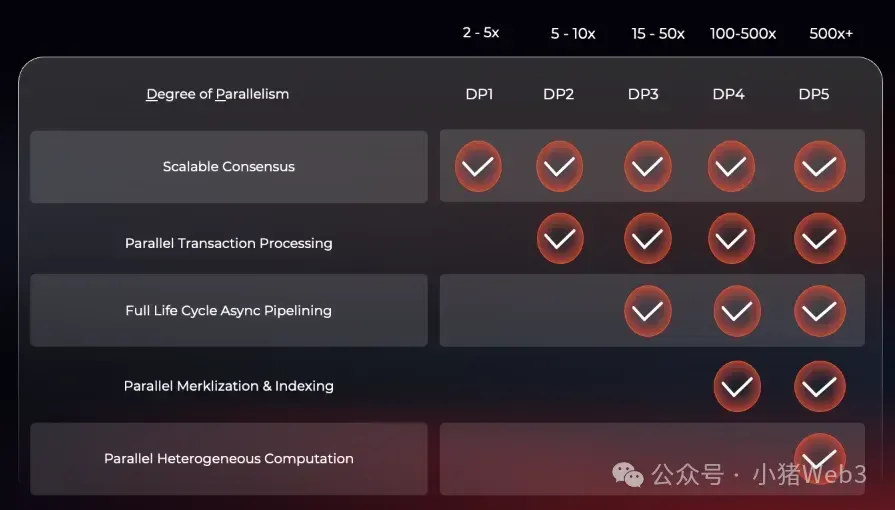
Pharos adopts a DP5 full-stack parallel architecture, and accelerates comprehensive upgrades from consensus, transactions, pipelines, storage to hardware:
-
Scalable consensus protocol: a high-throughput, low-latency BFT consensus protocol that makes full use of the entire network resources;
-
Dual virtual machine parallel execution: a parallel execution layer of EVM and WASM, using advanced compilation technology;
-
Full life cycle asynchronous pipeline: realizes parallel and asynchronous processing through the entire life cycle of each transaction and between blocks;
-
High-performance storage with certified data structures (ADS): delivers superior throughput, low latency I/O and cost-effective state storage that securely scales to billions of accounts;
-
Modular Special Processing Network (SPN): seamlessly integrates new software, hardware and geo-decentralization, supporting a variety of use cases and emerging technologies.
Summarize
Thanks to Ethereum's long-term and sufficient user education, EVM has the largest developers and the largest DApp ecosystem in the Web3 world, and has almost become a Javascript-like existence in the Web2 world. However, the expansion problem of Ethereum seriously hinders the further development of EVM, so parallel EVM has become one of the most important technical directions.
Monad balances scalability and decentralization through its parallel execution model, providing developers with 10,000 TPS throughput without compromising EVM compatibility, and its independent consensus provides autonomy, but sacrifices Ethereum security assurance, which may hinder developers who prioritize trust and shared security.
MegaETH is undoubtedly the best in latency and throughput (TPS), with ultra-low latency of 10 milliseconds and 100,000 TPS throughput, suitable for applications that require near-instant response, such as GameFi, SocialFi and high-frequency trading, but due to its centralized sorter design, it may raise questions about decentralization.
Pharos has transaction processing capabilities of up to 50K TPS and 2 gGas/s, and its performance is comparable to emerging high-performance EVM blockchains such as Monad and MegaETH. At the same time, Pharos' "Ant Gene" focuses on institutional customers and RWA-Fi that complies with regulations, which can truly meet the future market's demand for compliant and efficient blockchain infrastructure.
From the public data, MegaETH and Pharos have much better performance than Monad, but considering that Monad has the largest financing, there are sufficient development resources to make breakthroughs. Therefore, the competition between Monad, MegaETH and Pharos is essentially no absolute leader, leaving developers with more trade-offs on performance, decentralization or specialization.


 chaincatcher
chaincatcher